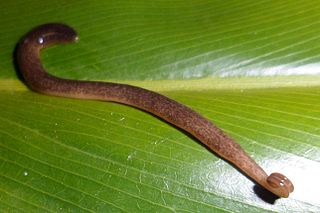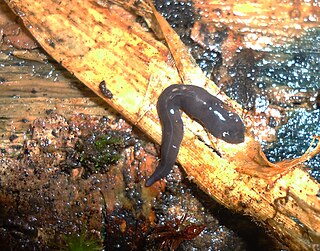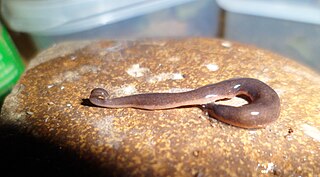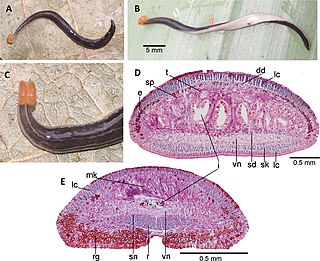
Obama is a genus of land planarians from South America. It contains several species adapted to human-disturbed environments, including the only invasive land planarian native to the Neotropical realm, Obama nungara, which has been accidentally introduced in Europe.

The reproductive system of planarians is broadly similar among different families, although the associated structures can vary in complexity.

Choeradoplana is a genus of land planarians found in South America.

Notogynaphallia is a genus of land planarians from South America.
Cratera crioula is a species of land planarian belonging to the subfamily Geoplaninae. It is known from specimens found in Cantareira State Park, Brazil.
Gigantea urubambensis is a species of land planarian belonging to the subfamily Geoplaninae. It is known from specimens collected in rainforests of the Lower Urubamba River valley in Peru.

Choeradoplana benyai is a species of land planarian belonging to the subfamily Geoplaninae. It is found in areas of Atlantic Forest within Rio Grande do Sul, Brazil, such as São Francisco de Paula.
Choeradoplana bocaina is a species of land planarian belonging to the subfamily Geoplaninae. It is found in areas within the Atlantic Forest in Brazil, such as Serra da Bocaina National Park.
Choeradoplana gladismariae is a species of land planarian belonging to the subfamily Geoplaninae. It is found in areas within the Atlantic Forest in Brazil, such as the Intervales State Park.

Choeradoplana minima is a species of land planarian belonging to the subfamily Geoplaninae. It is found in areas of Atlantic Forest within Rio Grande do Sul, Brazil, such as São Francisco de Paula.

Choeradoplana tristriata is a species of land planarian belonging to the subfamily Geoplaninae. It is found in areas of Atlantic Forest within Blumenau and Serra do Tabuleiro State Park in Brazil.

Choeradoplana eudoxiae is a species of land planarian belonging to the subfamily Geoplaninae. It is known from specimens found in the São Francisco de Paula National Forest in Brazil.

Choeradoplana claudioi is a species of land planarian belonging to the subfamily Geoplaninae. It is known from specimens found in the Augusto Ruschi Biological Reserve in Brazil.

Choeradoplana onae is a species of land planarian belonging to the subfamily Geoplaninae. It is known from specimens found in the Augusto Ruschi Biological Reserve in Brazil.

Choeradoplana riutortae is a species of land planarian belonging to the subfamily Geoplaninae. It is known from specimens found in Serra dos Órgãos National Park in Brazil.

Choeradoplana cyanoatria is a species of land planarian belonging to the subfamily Geoplaninae. It is known from specimens found in General Carneiro, Brazil.
Cratera boja is a species of land planarian belonging to the subfamily Geoplaninae. It is known from specimens found in Serra da Bocaina National Park in Brazil.
Cratera tui is a species of land planarian belonging to the subfamily Geoplaninae. It is found in Serra da Bocaina National Park and Itatiaia National Park in Brazil.
Cratera paraitinga is a species of land planarian belonging to the subfamily Geoplaninae. It is known from specimens found in the Boracéia Biological Station in Brazil.
Obama apiguara is a species of land planarian belonging to the subfamily Geoplaninae. It is found within Brazil.











